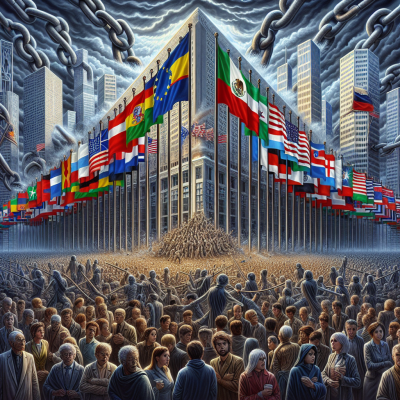
Markets React Sharply to President Trump’s New Tariff Announcements
The financial world was rattled on Friday after President Trump unveiled a fresh batch of tariffs, sending equities into a steep nosedive. The Dow Jones Industrial Average tumbled over 800 points by market close, marking one of the most turbulent trading days in recent memory. As investors, businesses, and policy analysts scramble to assess the long-term implications, one sentiment is abundantly clear: uncertainty reigns supreme.
Global Markets in a Tailspin
U.S. markets were not the only ones to feel the shockwaves. European stocks faced sharp losses, and indexes in Asia ended in the red as global investors fled to safer assets like gold and U.S. Treasury bonds. The renewed trade tensions have reignited fears of a global economic slowdown, especially as the U.S. reasserts a more aggressive stance on international trade relations.
Why Are Tariffs Causing Such Panic?
President Trump’s tariff announcements focus heavily on key imports from China and European Union countries. The new measures, which could amount to tens of billions of dollars in extra duties, were framed as an effort to protect American jobs and industries. However, the market’s response suggests widespread concern that this strategy could backfire.
Key concerns from investors and economists include:
- Elevated production costs: Many U.S. manufacturers rely on imported components that will now be more expensive, cutting into margins.
- Reduced consumer spending: Tariff-induced price increases may trickle down to consumers, weakening demand at home.
- Potential for retaliation: There is concern that trade partners may respond with counter-tariffs, escalating into a prolonged trade war.
Sector-Specific Impact
Meanwhile, the agricultural sector is bracing for possible Chinese retaliation. Farmers have already endured years of export restrictions during previous trade skirmishes; additional tariffs could deepen financial stress in America’s rural heartland.
Consumer Confidence Shaken
As markets slid, early indicators suggest American consumer confidence is starting to waver. For an economy largely driven by domestic consumption, this is an especially worrying sign. Lower confidence leads to reduced discretionary spending, which in turn could slow overall economic growth.
The University of Michigan’s Consumer Sentiment Index showed a sharp drop in preliminary April readings, citing “policy uncertainty and inflation fears” as main contributors. Shoppers across the nation are beginning to worry about higher prices for everything from basic goods to electronics and cars.
Monetary Policy Caught in the Crossfire
The Federal Reserve now finds itself in a precarious position. With inflation still above target and economic growth potentially slowing due to trade barriers, the central bank’s dual mandate is under pressure. Analysts are conflicted on whether the Fed will continue its path of rate hikes or consider temporary rate cuts to offset the fallout from tariff tension.
The Political and Global Ramifications
International trade partners and allies have reacted with a mix of caution and concern. The European Union and China have both issued stern statements, warning of reciprocal actions if negotiations falter. The possibility of the G7 and G20 meetings becoming battlegrounds for trade negotiations has never felt more likely.
On the home front, political fallout is continuing to brew. Business leaders and advocacy groups have voiced criticism over the unpredictability of the Trump administration’s trade strategies. With the 2026 midterm elections looming, economic performance is expected to be one of the defining issues for voters.
Navigating an Uncertain Economic Landscape
The stock market’s dramatic selloff reveals how fragile investor confidence can be in the face of policy uncertainty. With tariffs poised to affect virtually every layer of the economy—from industrial output and retail prices to international diplomacy—clear and consistent policy communication is more vital than ever.
While some believe tariffs are a necessary short-term pain to achieve long-term gains, others fear the U.S. could be embarking on a prolonged economic standoff that hampers growth and global cooperation. Either way, businesses, investors, and consumers are now bracing for what may be a long and uncertain road ahead.
Stay Informed and Prepared
As the situation continues to evolve, stakeholders across industries should monitor policy developments carefully, consult economic forecasts, and prepare for continued market volatility. Whether this is a temporary market correction or the beginning of a longer-term shift in economic strategy, one thing is certain: the world is watching closely.


Leave a Reply